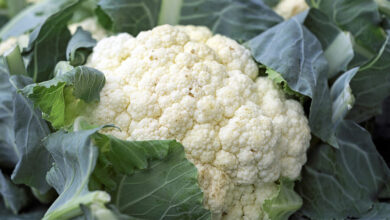Green Onions: Health Benefits And Side Effects

The History Of Green Onions
Green onion is a herbaceous plant from the onion family. Leek, batun, shallot, and even wild garlic are also considered green onions.
The bulbs of such a plant can also be eaten, but, unlike onions, they are much smaller and undeveloped. It is the above-ground, green part of the vegetable that is harvested.
Presumably, the steppe nomads of Asia were the first to notice the bow. Moving across the steppe, they found islands of this pungent fragrant plant and ate it. Subsequently, the seeds of green onions came to the Mediterranean, and spread throughout the world.
An unusual tradition of Persian Jews is associated with green onions. On Passover, during a meal before a special song about the scourging of the Israelites, Jews beat each other with onion shoots. This symbolizes the real suffering endured by the Israelites.
The composition and Calorie Content Of Green Onions
| Calories per 100 g | 19 kcal |
| Squirrels | 1.3 g |
| Fats | 0 g |
| Carbohydrates | 4.6 g |
The Benefits Of Green Onions
Onion feathers have a much richer composition than the bulb. They have a huge amount of vitamins: in just 100 grams of greens, there are more than 200% of the daily requirement for potassium, 100% of vitamin C and A. There are a lot of green onions and B vitamins, as well as calcium and zinc. Essential oils give green onions such a bright aroma.
Vitamin A helps to preserve the beauty and health of the skin, hair, nails, slows down the aging process, makes blood vessels more elastic.
Green onions contain vitamin A, which improves eyesight. It is a natural antibiotic (contains bioflavonoids quercetin and anthocyanin, zinc), which stimulates the immune system and inhibits the growth of pathogenic flora.
Flavonoids, quercetin and sulphur compounds have antioxidant and antimicrobial properties. And vitamin C improves immunity, so green onions are especially effective for seasonal colds, flu, vitamin deficiency.
It has long been noticed the properties of green onions to disinfect the oral cavity, although it leaves a sharp onion smell. The use of green onions reduces the risk of caries, stomatitis. Also in this plant there are substances important for eye health – zeaxanthin and lutein. The use of greens is a good prevention against eye diseases, with their frequent tension.
Side Effects of Green onions
Green onions, when consumed in large quantities, can cause burning and discomfort in the stomach, increase the acidity of gastric juice, and irritate the respiratory organs. This is what causes bad breath.
It should be used with caution by people suffering from asthma, kidney and liver diseases. It is contraindicated in its raw form and for children under 2.5 years old.
There is also a lot of vitamin K in green onions, which significantly increases blood clotting – it becomes thicker, and the likelihood of thrombosis increases. People for whom such conditions are dangerous should not lean on green onions.
The Use Of Green Onions In Medicine
In medicine, green onions are recommended for severe beriberi, as they contain a lot of vitamins and minerals.
In folk medicine, onions are known as a remedy for stomatitis and infections of the oral cavity – onions are thoroughly chewed. Also, green onion juice is gargled with pain, applied to the hair to strengthen them.
Onion well disinfects small wounds and abrasions, although it provokes a burning sensation.




